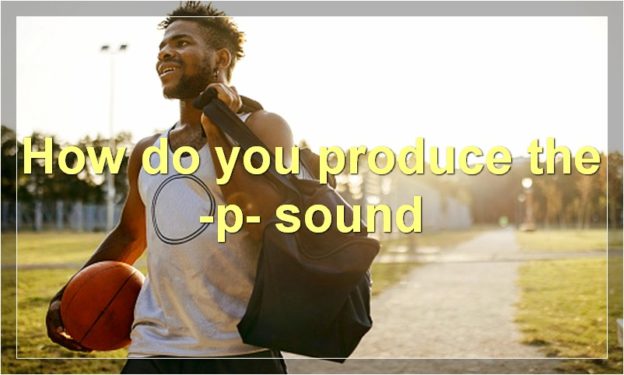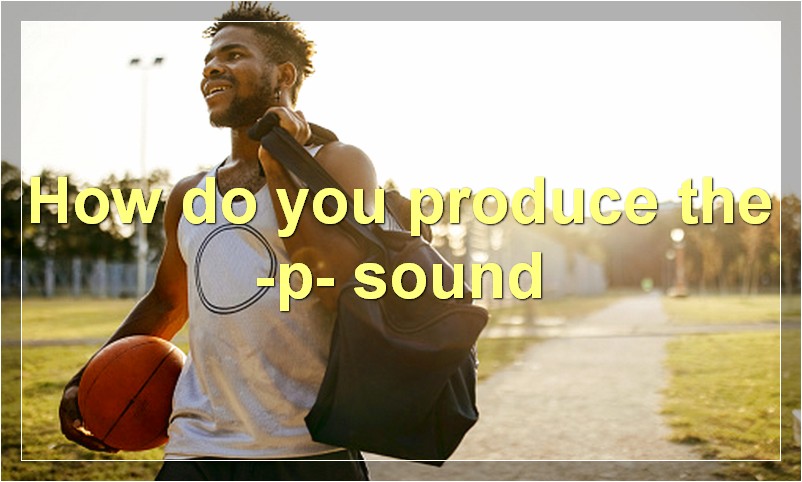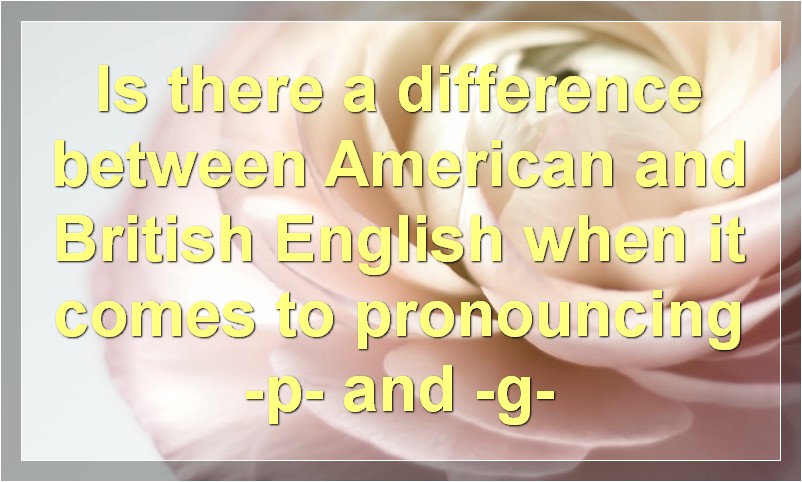The “p” and “g” sounds are two of the most commonly confused sounds in the English language. While they may seem similar, there are some key differences that can help you get them right.
What is the difference between “p” and “g” sounds
Pronouncing the letter “p” and “g” can be tricky for English language learners. The main difference between the two sounds is that “p” is unvoiced, meaning that you don’t use your vocal cords to make the sound, while “g” is voiced, meaning that you do use your vocal cords. To make the “p” sound, put your lips together and then release the air. For the “g” sound, keep your mouth relaxed and make a soft “g” noise in the back of your throat.
How do you produce the “p” sound
The “p” sound is produced by placing the lips together and then releasing a burst of air. Try it yourself! Place your lips together and then release a short burst of air. You should hear the “p” sound.
How do you produce the “g” sound
To produce the “g” sound, place the tip of your tongue behind your top front teeth and exhale. As you exhale, try to make a “k” sound by pushing air through your vocal cords. When you do this, you should feel a vibration in your throat. The “g” sound is similar to the “k” sound, but it is produced further back in the mouth.
What are some minimal pairs that contrast “p” and “g”
A minimal pair is a pair of words that differ in only one phonological element and have distinct meanings. A minimal pair that contrasts “p” and “g” would be the words “pat” and “gat.”
Why do some people have a hard time distinguishing between “p” and “g”
There are many reasons why people might have a hard time distinguishing between “p” and “g”. It could be due to the way our brains process sound, or it could be because of the way our mouths are shaped. It could also be a combination of both.
The brain processes sound in different ways depending on the person. Some people might have a hard time distinguishing between two similar sounds because their brain doesn’t process them in a way that allows them to easily tell them apart. Other people might have an easier time because their brain processes sound in a way that helps them to more easily distinguish between different sounds.
The shape of our mouths can also affect how we hear sounds. If our mouths are not shaped in a way that allows us to easily make the sound of “p”, then we might have a harder time hearing it when other people say it. This is why some people might need to practice making the sound of “p” before they can start to hear it more clearly.
Is there a difference between American and British English when it comes to pronouncing “p” and “g”
When it comes to the pronunciation of certain words, there can be a big difference between American and British English. Take the words “p” and “g” for example. In American English, the “p” is pronounced like a “b” and the “g” is pronounced like a “j”. However, in British English, both the “p” and the “g” are pronounced like a “p”. This can obviously create some confusion for people who are trying to learn both forms of English.
One of the main reasons for this difference is that American English has been influenced by other languages, such as Spanish and Native American languages, which use a lot of “b” sounds. British English, on the other hand, has been influenced by languages like French and German, which use more “p” sounds.
Interestingly, there are also some differences in how these words are pronounced depending on where you are in the United States. For example, in New York City, many people pronounce the “p” like a “b” and the “g” like a “j”, while in Boston, people tend to pronounce both the “p” and the “g” like a “p”.
So, what does all this mean for you? If you’re learning English, you need to be aware of these differences and try to listen carefully to how native speakers say these words. And if you’re teaching English, make sure your students are aware of these differences as well so they can avoid any confusion.
What other consonants are similar to “p” and “g” in terms of sound production
There are many consonants that are similar to “p” and “g” in terms of sound production. These include “b”, “t”, “d”, “k”, and “v”. Each of these consonants is produced by using the same muscles and mouth position as “p” and “g”. However, the difference in sound production is due to the different positioning of the tongue. For example, “b” is produced with the tongue positioned behind the top teeth, while “t” is produced with the tongue positioned behind the bottom teeth. As a result, “b” has a softer sound than “t”.
What are some common errors made when pronouncing “p” and “g”
One common error is to pronounce “p” as if it were an “f”. Another is to add an extra syllable to words that end in “g”, such as “going” which would be pronounced “go-ing”.
Are there any tricks for remembering how to produce the “p” and “g” sounds
The “p” sound is made by putting your lips together and then releasing a burst of air. The “g” sound is made by putting your tongue behind your top teeth and then releasing a burst of air.
Why are the letters “p” and “g” used in the phrase “everyday speech”
The letters “p” and “g” are used in the phrase “everyday speech” because they are two of the most common sounds in English. The letter “p” is used in words like “please” and “party”, while the letter “g” is used in words like “go” and “good”.



